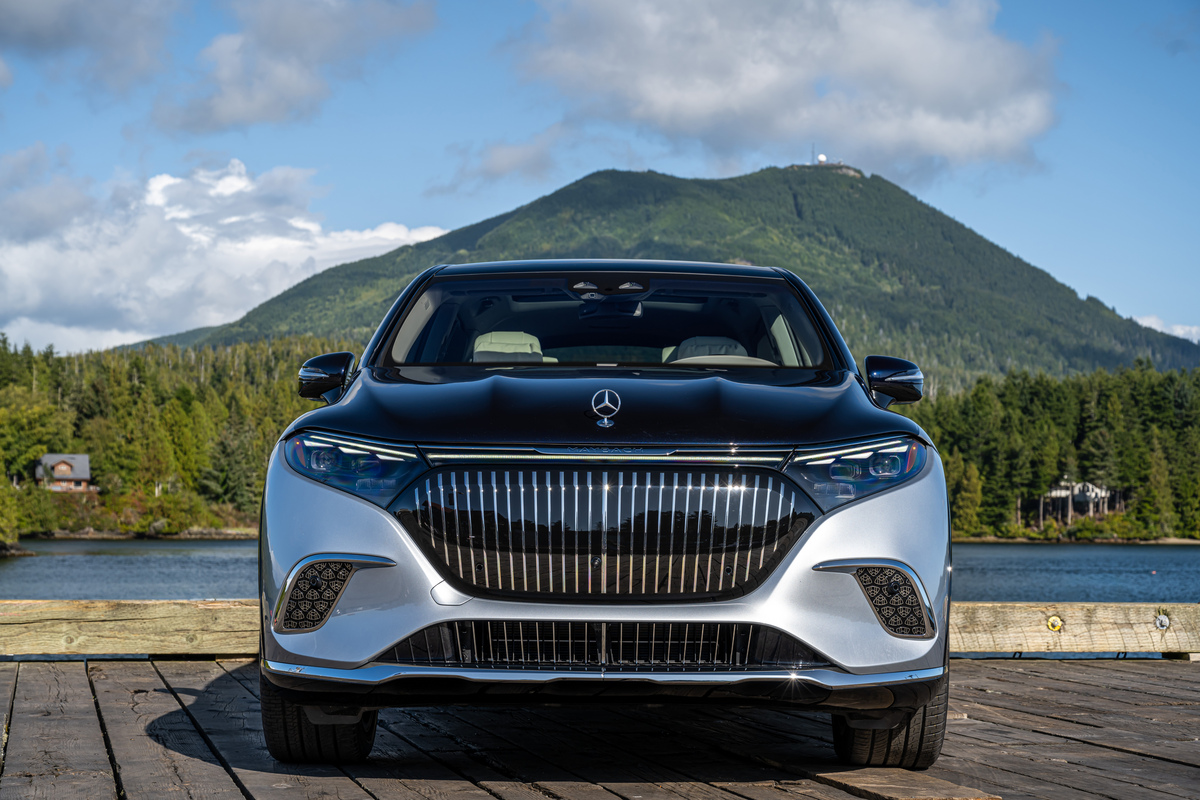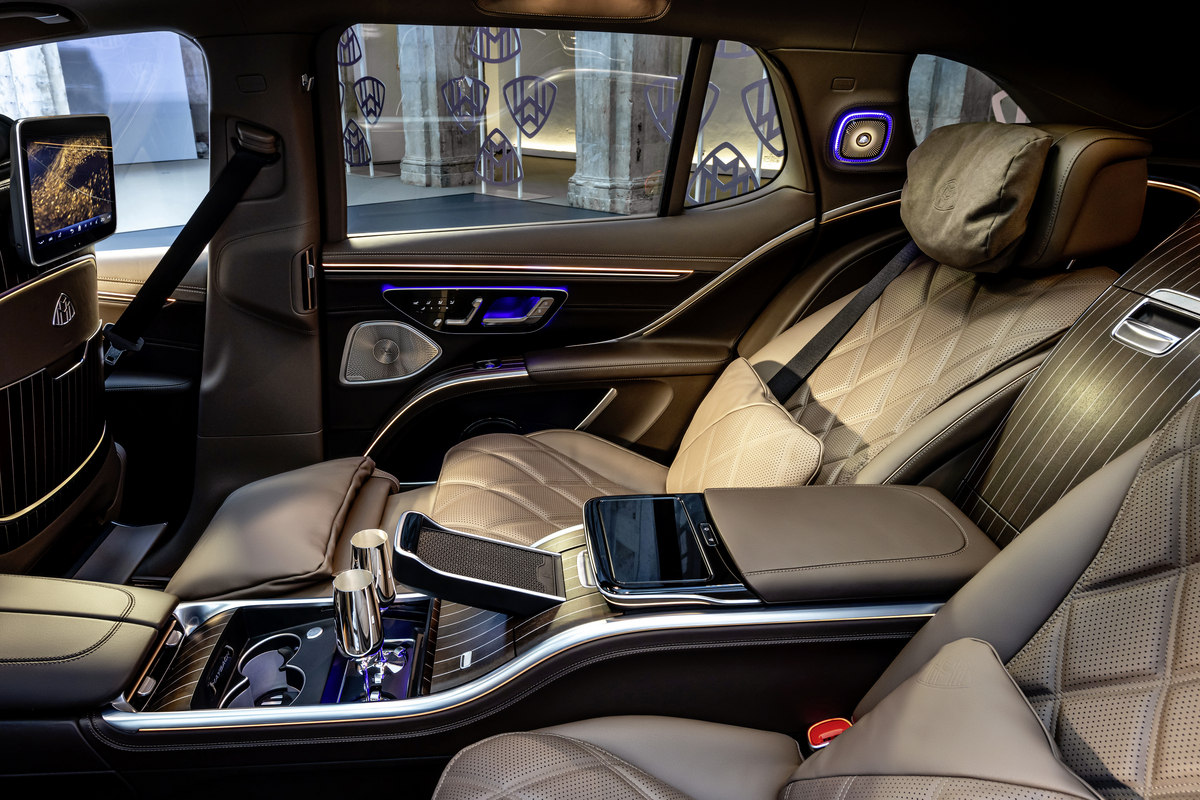
Mercedes has announced how much its Mercedes-Maybach EQS 680 SUV, and its “Night Series” edition, is going to cost. As expected, it’s not cheap. The luxury electric utility vehicle will start at just under $180,000 — but that’s what you’ll pay before taxes and fees for a stripped-down basic version of the EQS 680. If you want the “Maybach Night Series Design Package” (and if you have an eye for luxury, you probably do), it’s going to set you back an extra $25,000. Add on a couple of grand for the “destination fee” and a state-dependent tax bill, and you’re looking at north of a quarter of a million if you want to experience the best of Maybach’s first all-electric vehicle.
In terms of performance, the EV offers a pair of synchronous electric motors with a 484 kW output equating to 649 horsepower and a 0-60 time of just 4.1 seconds.
An air suspension system with adaptive damping will help ensure the ride has that luxury glide, as opposed to the more involved, less comfortable experience you’d get from a sportier vehicle — or the borderline offroad experience you’ll encounter in something significantly cheaper.
The Maybach packs other high-end features like rear-axle steering. So the “premium” driving system is pretty set. But what about its luxury touches?

While the price tag is high, the luxury touches justify it
As with other Maybachs, the EQS 680 comes at a heavy premium. The Night Series Design package pushes things even further and costs as much as a lower-end vehicle on its own. However, when you look at what you get, the pricing is arguably justified.
The “basic” version of the Mercedes-Maybach EQS 680 comes with some premium infotainment features, including an MBUX Hyperscreen with a 17.7-inch OLED Central Display, a 12.3-inch OLED Passenger Display, a 12.3-inch Instrument Cluster, and two 11.6-inch-MBUX Rear Seat Entertainment Displays. The sound system is also high-end and comes courtesy of Burmester.
But what about the luxury aspects? The “executive rear seat package plus” comes at no extra cost and essentially turns the back of the vehicle into an experience akin to that of a set of luxury airline seats. You can expect a folding tray table, “four-place seating,” and heated armrests. Even the cup holders have a heating and cooling feature, so you can keep your beverage at its optimal temperature if you’re being chauffeured.
If you’re wondering what the extra $25,000 gets you -– then that upgrade is mainly aesthetic. Everything from the wheels to the door sills will bear some indicator that you stumped up for the Night Series package. The interior will be clad in dark walnut and sustainable Nappa leather. Even the pins in the headlights get an upgrade. While this may initially seem like a bit of a waste, aesthetics are pretty important to the whole luxury experience. There’s a difference between sitting in a comfortable chair in a Days Inn off I-95 and an equally comfortable chair in the Waldorf Astoria. That difference goes beyond the type of padding used.
Editors' Recommendations
- Ford recalls 35,000 Mach-E Mustangs due to major issue with EV battery system
- BMW, Mercedes Benz offer competing visions of our EV future
- Mercedes-Benz’s new EQE EV SUV pricing is out, and it’s well over six figures




